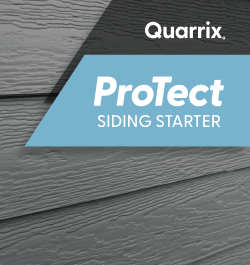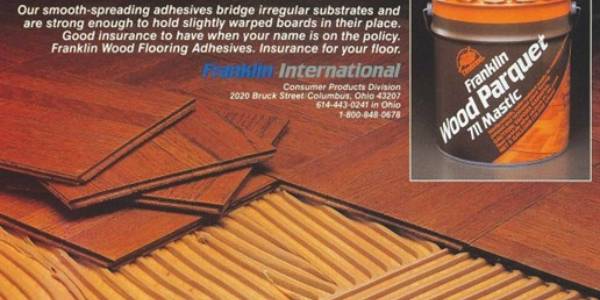Exterior Caulk that Exceeds Your Jobsite Needs

By Sashco.
Water-based sealants are very easy to use on siding and other exterior surfaces – but can they provide the quality you’re looking for?
Every roofing contractor has struggled with finding a balance between productivity and performance. Water-based sealants are a simple and quick solution for exterior surface uses, however, not all water-based sealants are created equal. As a contractor, you’ll need to find the best exterior caulk for the job.
While water-based sealants are inherently easy to apply, not every formula has the weather resistance and durability that you need as a professional contractor. You’ll need to ensure that you’re using a product that meets all of your requirements as a contractor.
Finding the right water cleanup caulk will pay big dividends on your reputation. It makes for a much faster, easier application, especially for your new recruits. Here’s what to consider when searching for the best exterior caulk for your project.
What are the qualities of a high-performance exterior caulk?
Using the best exterior caulk that you can buy ensures you get the result you want. Since most caulks and sealants look the same on the outside, it’s a good idea to dive deeper and look at some of these critical features before you make a decision:
-
UV resistance. We protect our skin and eyes from the sun’s blaring UV rays, so why should your exterior sealant be any different? A building’s exterior takes a lot more abuse from sunshine, so you need to choose a sealant with superior UV resistance to prevent it from drying out, getting brittle, cracking and failing.
-
Elasticity. All structures shift at least a little bit. When the snow falls, when the wind blows, when the humidity rises, or the temperature spikes, there will be some expansion and contraction. You need to choose a sealant that moves with the joint, and the flexibility you get with ordinary latex caulk is just not enough. The result? Your caulk tears, cracks and fails – and you’re right back at square one. Why do things twice when you can do it right the first time? The sealant you choose should be able to endure countless stretching and compressing cycles and still return to its original shape.
-
Ubiquitous adhesion. It is one thing to adhere to a particular surface—a metal window frame, for example—but it’s a whole new world when you have a sealant that can stick to anything. A home’s exterior typically has several transitions, from vinyl to stucco to fiber cement to wood, and even traditional brick-and-mortar. When one sealant does the job, your life becomes a whole lot simpler.
-
Withstands extreme weather conditions. In some areas of the country, temperatures can fluctuate as much as 60˚ in 24 hours. For instance, in Denver, where Sashco Sealants are made, Labor Day, September 7, 2020, hit a record high of 93˚ F. The following day, the mercury dropped to a record low of 31˚ F, bringing snow and an abrupt increase in humidity with it. Imagine the rapid shifts of the average home’s framing, sheathing, and siding. When you choose the best exterior caulk for the job, you are essentially protecting your customer’s home from those extremes.
Why latex or silicone is not the best exterior caulk
Of course, there are plenty of different types of caulks and sealants. Many have some of the qualities mentioned above – but maybe not all. If you are focused on doing the best possible job for your customer, it is vital to know your sealant’s limitations.
For example
Standard latex caulks are water-based and generally easy to apply. But if you are spending less than $6 per cartridge, it’s probably going to dry hard and brittle. When the weather changes and those big movements come, latex caulks will either crack in the middle or pull away from the surface, forcing you to reapply. The best you can expect from latex is a flexible bead, which, unfortunately, will tear like paper when the joint movement comes. Not ideal, and certainly not a bargain, even though it costs less.
Silicone sealants have great elasticity and super UV resistance, so you might think they’d be a good choice, but there are definitely some downsides. First, they are not paintable. Plus, silicones have plasticizers that invade surrounding surfaces and render them unpaintable as well. Have you ever wondered why paint fails so close to the caulk line? Silicone sealants are usually the culprit.
Secondly, if the silicone ever needs to be repaired or replaced, you’re in for a major hassle. Silicone does not adhere to itself, so it can’t be fixed. So not only do you have to remove it, but you’ll also need to use a chemical to do so. Scraping alone won’t remove the silicone film, and any leftover residue prevents anything else from adhering to the surface. We guarantee you won’t like that job—and neither will your customer.
So, which sealant will meet my job needs?
Big Stretch is an innovative water-based sealant from Sashco that can handle all your exterior caulking needs - dare we say it’s even the best exterior caulk for your next project! When it dries, it has a rubbery, elastic texture that can stretch and compress along with the building. It adheres well to a wide range of exterior materials, including vinyl, which isn’t always compatible with other water-based sealants.
Big Stretch also offers an excellent lifespan of 15 to 30 years. It’s made with a high-quality acrylic polymer that is UV, weather and ozone resistant. This means it can work well in a variety of different climates. Additionally, the acrylic polymer is self-plasticized, so it won’t dissipate into the air or migrate to other surfaces over time. It stays put and is built to last.
When it comes to application, Big Stretch has an advantage. It goes on smoothly and is very easy to clean up. Unlike silicone sealants, it’s compatible with most latex and oil-based paints, so your customers can get the look they want without compromising quality.
Finding the right exterior caulk can make a big difference for your team. Not only does it make things easier, it also keeps your customers happy and helps you establish a great reputation. Water-based sealants can differ by formula, so it’s okay to be picky when choosing the right one for your business. Choose a caulk that you can put your company’s name behind - a quality water clean-up caulk like Big Stretch.
Learn more about Sashco in their RoofersCoffeeShop® Directory or visit www.sashco.com.
Original article source: Sashco





















Comments
Leave a Reply
Have an account? Login to leave a comment!
Sign In